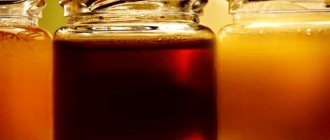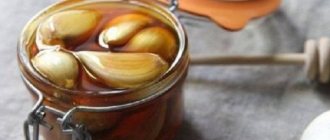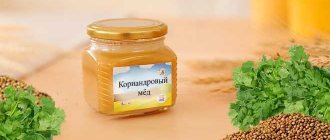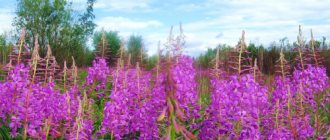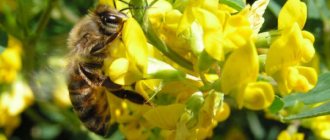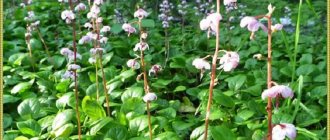In Europe, rapeseed honey is popular, but in our country many people do not realize its importance. The benefits and harms of rapeseed honey is a topic that requires special attention and detailed consideration. Rapeseed nectar is valuable, rich in unique properties, which are confirmed by scientists.
It is called "white honey" because of its light color. This variety is rare due to irregular seeding of rapeseed and rapid crystallization. Even if the beekeeper took the honeycombs from the hives on time, pumping out the nectar is problematic: it remains liquid for four weeks.
Important! The collection takes place in July, so rapeseed honey cannot be purchased in liquid form in August. The real thing can only be purchased in bars; everything else is a fake.
Composition and calorie content of rapeseed honey
Main composition: glucose and fructose. It can be harmful for diabetics - they should eat other varieties that contain more fructose. Feature: water content is 20%, which contributes to souring if stored improperly.
| Compound | % |
| Fructose | 39 |
| Glucose | 38 |
| Water, sucrose, ash, organic acids and other substances | 23 |
Value: presence of 300 minerals and trace elements. Contains 320 kilocalories per 100 g, carbohydrates – 80%, proteins – 1%, fat content – 0%. The beneficial properties are determined by the rich composition.
What are the benefits of rapeseed honey?
It is called the “life-giving spring.” It helps normalize damaged tissues, frees the body from poisons and toxins. Therefore, it is especially recommended for people living in areas with poor ecology.
The value is determined by the content of vitamins and nutrients that it consists of. It is especially rich in vitamin B, which has a good effect on the nervous system and metabolism. Regular consumption improves the condition of the heart, blood vessels, and stomach. It is used in cosmetology and medicine, as it has a restorative, analgesic, and warming effect. The properties, disadvantages and advantages of rapeseed honey are explored.
For the nervous system
This variety strengthens the nerves. It has a relaxing effect, relieves insomnia and fatigue. Very useful for children. Acts as a sedative. People who consume it regularly are calmer and less stressed. Their attention is more concentrated, memory improves, and thought processes accelerate.
For the cardiovascular system
Bee rapeseed dessert is good for the heart:
- strengthens the muscle;
- improves blood flow;
- relieves sudden changes in pressure;
- strengthens capillaries and blood vessels;
- lowers cholesterol.
For the gastrointestinal tract
The benefits for the stomach from rapeseed honey are enormous. Regular use is necessary for gastritis, ulcers, and acidity of the body. Useful for intestinal microflora, has a hepatoprotective and choleretic effect. Frees the body from slagging, toxic substances, poisons. Useful for diarrhea and constipation.
For lesions and diseases of the skin
Rapeseed dessert is beneficial in treating skin injuries. Cuts, burns, bruises, and bites heal faster when using bandages made from it. It has a regenerating effect for dermatitis, acne and abscesses. With complex treatment, it relieves psoriasis and eczema.
For inflammation in the mouth and larynx
The properties are beneficial for colds. Honey with hot milk is a proven remedy. Suitable for adults and children. Thanks to its medicinal properties, it relieves pain and thins mucus. An excellent cough remedy. Useful for stomatitis: it needs to be dissolved in the mouth.
Rapeseed honey - beneficial properties
The usefulness of a bee product depends on its chemical composition. Rapeseed nectar is valued for its medicinal effect. Beneficial features:
- strengthening the body's protective barrier, which helps resist infections during the cold season;
- struggle - runny nose, sore throat;
- restoration of a healthy balance of intestinal microflora;
- beneficial effect on the liver;
- cleansing the body of harmful substances, waste, toxins;
- activation of regenerative abilities in case of damage to the skin: wounds, burns, frostbite, bruises;
- elimination of symptoms of the inflammatory reaction;
- quick satisfaction of hunger;
- acceleration of mental activity, improvement of concentration;
- calming the nervous system, combating insomnia, sleep disorders, stress;
- recovery after physical activity, serious illnesses, operations.
The use of rapeseed nectar in cosmetology is widespread. Based on the product they make,. In combination with the bee product there are other useful ingredients: lemon, onion, egg yolks, oatmeal.
The benefits of honey masks: giving the skin freshness, elasticity, returning a healthy color, eliminating pimples, acne. The use of folk remedies based on natural ingredients will restore strength, shine, and thickness to your hair.
Rapeseed honey. Therefore, it is advisable to know. Failure to follow recommendations leads to loss of beneficial properties. Storage rules:
- clean glass or wooden containers;
- tightness, it is recommended to wrap the container with thick paper;
- placing containers in the refrigerator;
- Avoid exposure to direct sunlight.
Collecting nectar from ecologically clean areas, proper storage, and following recommendations for use are factors that provide maximum manifestation of beneficial properties. This makes the use of the bee product limited for medicinal purposes, so nectar is often replaced with other varieties.
Traditional medicine recipes with rapeseed honey
The beneficial properties of bee dessert help to cure a number of ailments.
For a cold. You need to dissolve honey in hot water and then drink it. This drink will be beneficial and help you heal.
To enhance immunity. Melt 250–300 g of honey and cook for 10 minutes over low heat. Skim off the foam and strain. Add chopped rose hips - 50 g. Boil again for 1 minute. Medicinal rapeseed dessert is beneficial when taken orally or added to tea.
For rhinitis. Dilute 1 tsp in hot water (100 ml). honey, add 2-3 drops of eucalyptus or mint oil. Breathe the healing steam, covered with a blanket. Then drink a healing drink. The beneficial properties will quickly relieve the symptoms of the disease.
To increase potency
Grind 10 walnut kernels, add 1/2 tbsp. boiled water. Leave to infuse for 2 hours. Then pour in melted honey - 4 tbsp. l. Take 1 tbsp. l.
Treatment of sexual impotence
Young nectar is needed. Melt 250 g, combine with warm water - 500 ml. Dip a towel into the solution and make a compress below the waist. Repeat every evening for 2 weeks. This procedure will not cause harm, only benefit in solving this problem.
Description
Unfortunately, many beekeepers and beekeepers to this day are not eager to set up bee houses near boundless fields, covered with a yellow blanket of flowers that give a dizzying sweet aroma. The fact is that they mistakenly classify rapeseed beekeeping product as low-grade and one that will not find its consumer. But experienced beekeepers believe that, by and large, it does not matter whether bees carry nectar from forest edges or from agricultural fields. The main thing is that the honey turns out tasty.
So who is right and whose opinion is wrong. Let's take a closer look at all the advantages and disadvantages of rapeseed and its honey:
- rapeseed belongs to the cabbage family, which is why it does not cause significant harm to anyone;
- it is widely cultivated, as a result, the flowering fields of rapeseed are truly endless;
- From bright yellow flowers (flowering period from late spring to early summer), bees can collect at least 8 kg of fragrant nectar per day.
- In addition, rapeseed in the fields blooms at the end of summer and beginning of autumn, which gives a late harvest.
As you can see, the plant is useful in all respects. Naturally, nectar from rapeseed will definitely turn into honey and will be characterized by:
- general bright yellow color with small inclusions of a whitish tint;
- a special aroma that has a tart, sugary-sweet aftertaste;
- very thick structure (often honey crystallizes while still in the honeycomb, which is bad for bees, so beekeepers avoid placing hives near rapeseed fields);
- “sugaring” after 3 weeks, which, in principle, does not affect the beneficial properties in any way;
- slight bitterness after drying and a fine-grained white structure;
- the unpleasant property of rapid souring, which is why its storage must be under constant control and only in glass containers, this is a big minus;
- poor dissolution in water.
But since rapeseed fields are truly “rivers of honey,” for commercial production large apiaries are placed near the rapeseed. Therefore, it is worth noting the fact that almost all European supermarkets fill their “honey shelves” with this particular rapeseed honey product, giving it the names May, spring or Pioneer honey. But such nectar will only cause harm to bees, because honey crystallizes quite quickly even in hives. And under no circumstances should you allow rapeseed honey to get into wintering frames; bee colonies will die. That’s why beekeepers don’t like it when rapeseed blooms near the apiary in the fall, since when the nests have already been collected for the winter and rapeseed nectar getting into the frames will only cause harm during the wintering of the bees.
Rapeseed honey in cosmetology
This variety is indispensable in cosmetology. It has a good effect on the skin, as it has restorative, antiseptic, and warming effects.
The properties of bee nectar are indispensable in preparing masks at home. A natural product helps women stay young and attractive.
Face masks:
- For dull skin. Boiled oatmeal is mixed with honey, applied for 25 minutes, then washed off.
- From oily shine, rashes and lightening. Squeeze lemon juice into honey. Apply the mask for 15–20 minutes, then wash off.
Hair masks:
- For hair loss. Grind the onion, add 4-5 tbsp. l. honey Apply evenly to the roots, leave for 30 minutes, then rinse with water. To eliminate the smell of onions, add essential oils to the rinse water.
- To reduce hair oiliness. Mix honey with 2 egg yolks. Leave on hair for 30–60 minutes, rinse.
We recommend reading: The benefits and harms of leeks
Also useful for massage. It does not cause harm to the body. Honey massage cleanses the skin and removes toxins.
Culinary compatibility
According to the canons of unhealthy nutrition, medicinal rapeseed honey can be used in combination with the following product groups:
- with vegetables (pumpkin, zucchini);
- with fruits (apples, sour plums);
- with cereals (oatmeal, rice, millet, cereal);
- with nuts and dried fruits (raisins, prunes, dried apricots, walnuts and hazelnuts);
- dairy products (butter, cottage cheese, milk, cheese);
- with drinks (herbal and dark tea, water).
Zizi braids: varieties of zizi braids and how to braid them at home (35 photos)
Proponents of separate nutrition do not recommend consuming honey with meat or fish - because this can contribute to digestion problems in the digestive tract and the development of fermentation processes in the stomach and intestines. If you want to enjoy it, it is better to do it before eating animal origin.
Harm of rapeseed honey and contraindications
Sometimes honey can be harmful to human health. For example, if bees collect nectar in fields that are overly treated with pesticides, which can end up in the final product. Also, after wintering, some beekeepers treat insects with antibiotics that accumulate in the dessert. These factors can affect the composition and properties, and the effects on the human body are difficult to predict.
Important! You cannot add honey to very hot tea - at temperatures above 40 ° C, harmful carcinogens are formed in it. Therefore, it is better to use it separately: after it dissolves, you need to swallow it, and only then drink it with liquid.
In order not to cause harm to the body, but only benefit, it is necessary to establish before taking it: whether the product is suitable, whether there is a tendency to allergies. It is better to consult a doctor. You should not give it to children in unlimited doses - this provokes caries. Diabetics should use honey with caution. During pregnancy and hormonal imbalances, bee nectar can be harmful – cause allergies. Therefore you need to be careful.
Attention! Consequences of taking it for allergies: itching, rash, rhinitis. You must first find out the contraindications so as not to expose the body to complications.
Contraindications for use
If you consume rapeseed honey very often and in large quantities, you can cause some harm to the body. Although this type of treat is considered less allergenic, it can still cause a negative reaction. This is especially true for allergy sufferers. This means that before using rapeseed honey, you need to make sure that there is no allergic reaction to this product.
Nursing mothers need to be especially careful about this. It is important to remember that until one year of age, honey should not be included in a child’s diet at all, even with breast milk.
It is also not recommended to self-medicate. If acute symptoms occur, you should consult a doctor and not rely on the properties of honey. It is capable of boosting immunity and restoring the functioning of some body systems, but it cannot compare with medical care, and certainly will not replace the professional work of a doctor.
Honey has a high calorie content due to the large amount of fructose it contains. Therefore, its excessive amount can lead to caries and obesity. People with diabetes should consume rapeseed honey in small quantities, and in case of exacerbations, completely exclude it from the diet.
Currently, the positive and negative qualities of rapeseed honey have not been fully studied and have not been scientifically proven. But its application in various fields speaks for itself. Many people have tested the beneficial properties of rapeseed honey on themselves and were satisfied with the results. After all, this product helps fight many diseases, improves immunity, adjusts the functioning of the digestive and cardiovascular systems, improves appearance, and makes a person calm and balanced.
How to check rapeseed honey for naturalness
In order to recognize rapeseed honey when purchasing, you need to know what type natural honey should be:
- color – white, light yellow;
- taste – sweet, with bitterness;
- thick, slightly soluble;
- liquid – after pumping, it crystallizes after 2–3 weeks.
Fresh product can only be purchased in July. Naturalness is determined as follows: you need to drop a drop on a blotting sheet - if after a minute a wet spot is visible on the back side, the product is unnatural.
Properties
Rapeseed honey has a fairly light, creamy white color. After crystallization of the apiproduct, the color changes by several tones and becomes even lighter. Crystallization occurs literally within one month, after which the substance resembles a whipped cream product.
After tasting the sweetness, you will feel large crystals and a very rich taste. The nectar is very sweet and has a bitter taste. This variety has a bright, even pungent odor; it is poorly soluble in water after crystallization.
Nectar is almost impossible to purchase in a liquid state - it begins to thicken 2-3 weeks after pumping.
How to store rapeseed honey
When purchasing a product, you must remember that it is subject to fermentation. Therefore, it is not recommended to stock up on the product to prevent it from spoiling.
It is necessary to comply with the storage conditions for rapeseed honey. The bee product should be kept in a glass or ceramic container with a tightly closed lid. When exposed to sunlight, it will turn sour and lose its smell.
Attention! To preserve beneficial properties, do not store in plastic or metal containers.
Distinctive features
What do you think this rare variety of bee nectar tastes like? Does its smell differ from other types of honey? In order to find out absolutely all its features and feel the difference, you need to not only taste this honey once, but also use it for other purposes.
In general terms, rapeseed honey has several main differences:
- its color is characterized by a light, milky white tint, sometimes there may be a slight yellowness;
- the product is almost insoluble in cold water;
- has a rich, pungent smell of honey, which cannot be said about other, even the most expensive varieties;
- for long-term storage “requires” special conditions, very often undergoes a fermentation process;
- creamy texture, oily to the touch;
- peculiar, sweetish taste;
- The crystallization period is one month.
See also
May honey: benefits, recipes for diseasesRead
The main disadvantage of the above-mentioned differences in rapeseed honey, which I would like to highlight, is its rapid crystallization. This feature has become a serious problem for people involved in bee breeding, because it is necessary to pump honey out of the hives as quickly as possible before it is completely sealed in the honeycombs. Another problem is its instability. Due to rapid fermentation, collected honey must be stored in strictly suitable conditions: a dark, cold and dry place is what you need. It is very important not to allow the room and containers with nectar to heat above +40 degrees.
